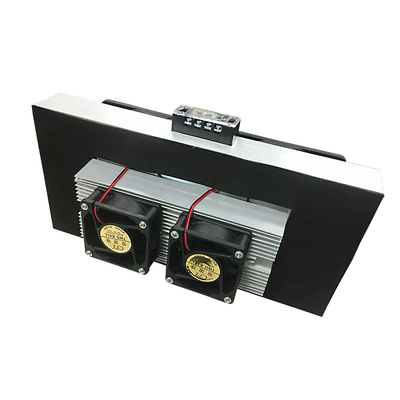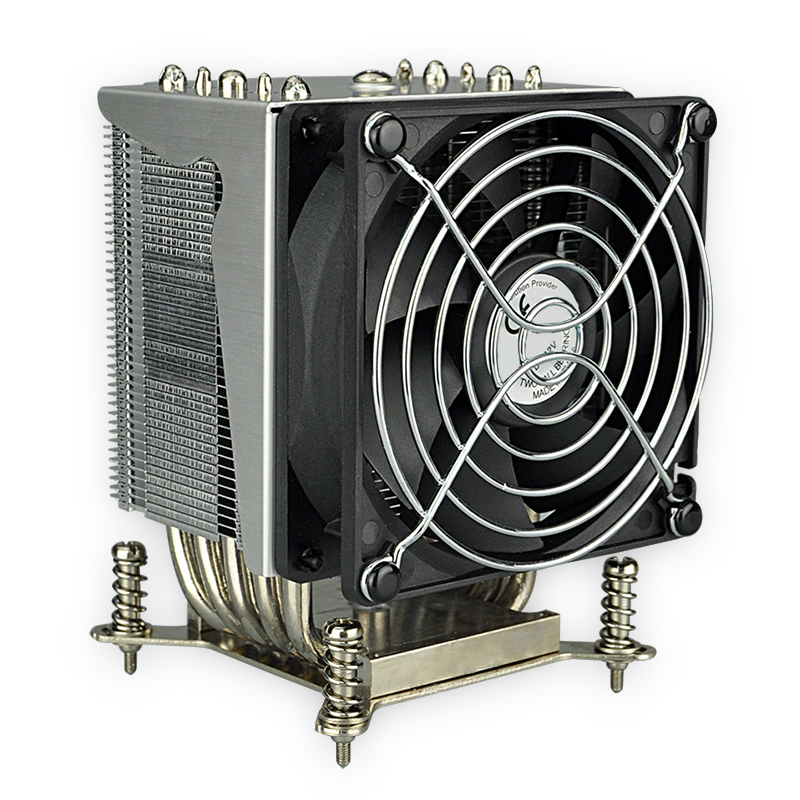Views: 9 Author: Site Editor Publish Time: 2023-07-29 Origin: Site
Electronic devices are part and parcel of everyone's life; functioning without them is nearly impossible. Whether it is about commercial, industrial, or residential spaces, there are widely used electronic devices that should perform up to the mark.
So, electronic devices also need cooling mechanisms so that the heat produced by components in them can be dissipated right away, leading to improved efficiency and lifespan of these devices.


If you are a manufacturer of electronic devices and looking forward to knowing how these cooling plates help in the thermal management of electronics, then you are at the right place. This article below comprises a detailed account highlighting all important aspects. So, let's read below.

Cooling plates are devices used in electronic equipment so that the heat generated by the components in these equipment can be dissipated away from them. Overheating components and systems can cause a serious problem because the components get slow and even damage the equipment's life.
Cooling plates have a flat and thin structure with a larger surface area, which helps dissipate the heat when it comes in contact with the heat-producing components.
There are many kinds of different cooling plates which have their functions. The most common types of cooling players are discussed below:
● The extruded cooling plate is manufactured using a block of material that is extruded using a die forming a flat plate; this plate may have fins either on one of its sides or both of its sides.
● Skived cooling plates, however, are made by shaving off a material block in a thin layer, and fins are created this way.
● The stamped cooling plate is also one type of cooling plate that is manufactured by the stamping technique. The sheet of material is stamped to achieve the required shape.
● A bonding cooling plate, as the name suggests, is a cooling plate that comprises two or more two layers of materials bonded together.
Cooling plates are made using many kinds of materials, of which the common ones are copper and aluminum; these materials offer improved thermal conductivity, which helps in quick heat dissipation. Stainless steel and graphite can be used depending on the application requirement.
Cooling plates help in the process of improving the heat transfer from the electronic components that are heated up by transferring them to the larger surface area where it dissipates. The entire heat transfer mechanism is divided into conduction, convection, and radiation.
In the conduction process, heat transfer occurs through a solid, creating direct contact between molecules. The cooling plates in this process provide a large surface area which, when gets in contact with the heat-producing components, the heat is conducted away from the source and spread across the space.
The process of convection uses a fluid to transfer heat. This fluid, known as coolant, absorbs heat. Then, with the movement of the fluid, it is transferred to the surface area, which helps dissipate it into the surrounding environment.
Radiation uses electromagnetic waves to carry out the process of heat transfer. Cooling plates help improve the transfer by sufficient surface area, and the larger the surface area, the higher the heat dissipation.
Cooling plates are widely used in applications with such electronic components, which generate a huge amount of heat. This may comprise LEDs, CPUs, and other power electronics.
The cooling plates in the CPU are primarily used along with heat sinks so that the heat is moved away from the processor. In power electronics, cooling plates help transfer the heat away from the semiconductor devices, and in LEDs, they help to transfer heat so that the lifespan of LEDs increases.
The design of the cooling plate plays a significant role in ensuring that the heat is dissipated optimally using these cooling plates. Some of the important considerations for designing the cooling plates are discussed below:
● The very first consideration is the size and shape of the cooling plate. It must be given the foremost attention ensuring it would easily fix in the device and will have the sufficient surface area to dissipate the heat.
● The role played by material in the cooling process must always be addressed. Hence materials like aluminum and copper should be chosen because they provide improved thermal management with a balanced cost.
● There are different cooling methods, for instance, natural convection and liquid cooling or forced convection; every method has a different design, and depending on the application, it must be considered.
● Fins prove to be an essential part of the cooling places, and when the design comprises micro-fins, it helps increase the surface area, and hence more heat dissipation is possible. However, it should be considered that the fin density must be balanced because high density leads to reduced cooling due to the blockage caused.
● Cooling plates are even subjected to surface treatments consisting of electroplating or anodizing, which also helps increase their cooling performance.
● There are multiple assembling techniques, like direct attachment using thermal paste or clamping. The components of the electric devices must be considered when deciding the assembling process.
Some techniques help in optimizing the performance of the cooling plate, and these are discussed below:
● By increasing the surface area of the cooling plate, heat dissipation can be improved, and it can be done by choosing different surface treatment methods or by designing fins in a way that helps to increase surface area.
● Thermal pads and thermal paste can be used to reduce the thermal resistance between the cooling plates and electronic components, which helps ensure better heat transfer.
● Changing the layout of the components or adding fans within the device helps the airflow within the device improve; hence, it offers better heat dissipation.
● Liquid cooling is more efficient than air cooling. Hence, cooling plates can be used in conduction with a liquid coolant that helps rapidly transfer heat.
● The cooling plate's design must consider the environmental factors it will be subjected to so that it may be created in a way that, when present in that environment, it doesn't fail to perform.
Cooling plates are essential to install in an electronic device, and they have benefits and certain limitations.
The benefits offered by cooling plates may include the following:
● Cooling plates balance the temperature of the electronic devices, and hence the risk of failure of components reduces.
● The lifespan of electronic components is increased by installing cooling plates because it reduces their operating temperature and performance stress.
● Since a cooling plate maintains a consistent temperature, the performance of the electric device also improves.
These cooling plates even have some limitations:
● Cooling plates are expensive, and some applications might find them unaffordable to install.
● Cooling plates made of materials like copper and aluminum are heavy; hence, they increase their weight when installed in the electronic system.
● Some high-power applications release a massive amount of heat, and there the performance of cooling plates could be more satisfactory.
To ensure an appropriate cooling mechanism for your electronic devices, the right cooling plate, manufactured with all the above-suggested factors, is needed. Kingkatech offers a wide range of cooling systems, and if you want a customized cooling plate for your specific application, you can contact us and discuss your requirements.